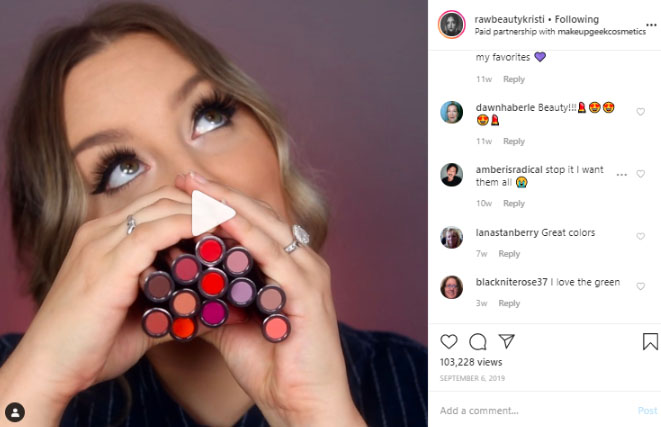With 80% of brands planning on utilizing Influencers in their 2020 marketing plan, it should come as no surprise that Influencer Marketing is the fastest growing Industry sector. However, apart from the manufactured “candid” photos and glowing testimonials, what is the substance behind the Influencer science? Check out these ways to measure whether your Influencer efforts are giving you the viral bang for your buck.
First, determine what the actual goal of your Influencer campaign is. Do you want more direct sales, to manage your brand reputation, or spread more overall brand awareness? While they may seem like overlapping ideas, these 3 campaign goals are all measured by different Key Performance Indicators, or more simply, KPIs.
Direct Sales:
While calculating direct sales off of an Influencer post may sound simple, depending on the product you’re selling, it may be more difficult than you think. There are 2 ways to attribute sales to your Influencer Marketing Campaign.
Using Affiliate links, or trackable links that you can directly monitor, are one of the easiest ways to see what traffic your marketing efforts are driving. Each link is unique to the Influencer, so you can easily tell which influencers are driving traffic, as well as how much traffic they’re driving in.
Promo Codes are also a technique you can utilize that will give you an idea of how well your Influencer campaign is going. Having each Influencer use a unique code that will give the buyer a small discount on the purchase can help directly track sales back to a post. However, affiliate/promo codes may slightly skew the numbers as it is hard to quantify if the buyer is purchasing due to the Influencer themselves or the discount.
Remember, while it’s possible to measure direct sales off on an Influencer campaign, it may be one of the more difficult campaign goals to accurately attain, as there are several factors outside the Influencer’s control that may skew the results, such as the time they posted, Instagram changing their algorithms, or even pop culture events taking precedence.
Managing Brand Reputation:
Oftentimes, brands hire Influencers as a way to manage their brand reputation, or to distance themselves from previous negative interactions, disastrous news stories or product contamination. While this in itself can be a goal for a campaign, it can be very difficult to directly measure. There are 2 ways to tell if your Influencer campaign is helping your brand’s reputation.
Look at the Comments. This may sound like simple advice, but reading through the comments on an Influencer’s post will help you gauge how their followers (and your target audience) are reacting to the collaboration. If the reactions are positive, great! You’re on the way to rehabilitating your image. If the comments aren’t so positive, you’re still left with great information for pain points you may be able to fix in the future.

Review Your Overall Traffic. Again, it may seem like common sense, but if your overall goal is to build a bridge of trust with your target market, checking website traffic, sales, and other tangible points of interest within 48 hours of an Influencer post going live will help you see if you are generating a spark of interest.
If brand management is the goal of your campaign, it is important to think of your campaign as less of a contract, and more of a relationship. If you’re trying to rehabilitate an image, it most likely will take more than one post to do so. Building relationships and trust take time, so reiterating a message and using multiple influencers across multiple platforms in order to generate awareness may be something to consider.
Brand Awareness:
If your main goal is to reach a particular audience to increase brand awareness, there are a few different metrics you should be looking at, including: Impressions, Reach and overall engagement.
Impressions is the total number of times that piece of content has been viewed, which will give you a general idea of how “viral” that content has gotten. Total Reach is the number of unique people who have interacted with that content.
Engagement is calculated by adding the total Likes and Comments on a post, then dividing that number by the number of Influencer’s followers. This percentage shows how strong an audience engaged with it. The average instagram post gets between 1% and 2%, while the average Micro or Nano Influencer gets around 10%.
These 3 metrics make it easy to see how many people are seeing your message and, more importantly, spreading your message, thus helping measure your end goal of promoting brand awareness.
No matter what your end goal is, as long as you have an idea of what your KPIs are, it’s easy to tailor a campaign to achieve exactly the results you want. With a combination of the right Influencers, the right message, and realistic expectations, Influencer marketing campaigns are a great and cost-efficient addition to any marketing plan.
-The Black Sheep Team

